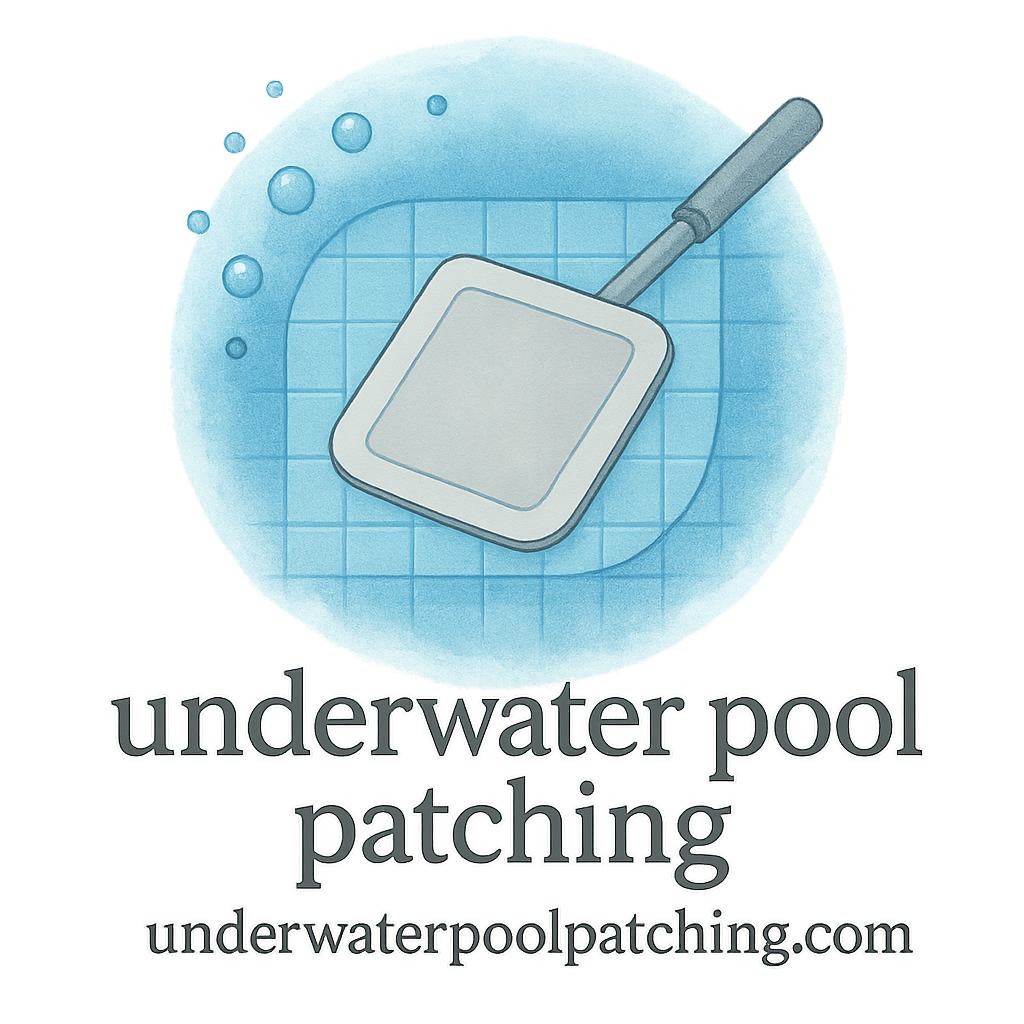Protecting your underwater pool patching is like guarding your investment from the silent killers of the swimming pool world — UV rays, water chemistry mishaps, and general wear and tear. Whether you just sealed a leak or you’ve patched a few rough areas, your work doesn’t stop after the fix.
In this post, we’ll walk you through 9 cover tips to protect your underwater pool patching. These practical and straightforward tips will help you save money, extend patch life, and keep your pool safe and beautiful all season long.
Let’s dive right in!
Why Underwater Pool Patching Needs Protection
Think of your underwater patch like a bandage on a wound. Sure, it’s doing the job now—but if it’s exposed to harsh conditions (sun, chemicals, scrapes), it won’t last. That’s why patch protection is vital for durability, appearance, and cost-effectiveness.
Plus, with the right maintenance and care, you’ll avoid repeating expensive repairs. Trust us, future-you will thank you.
Tip #1: Use a High-Quality Pool Cover
A simple pool cover can do wonders. It’s the easiest way to protect your patches from:
- UV rays
- Debris like sticks and leaves
- Temperature swings
Materials Matter: Choosing the Right Cover
Not all covers are created equal. Vinyl, mesh, or thermal blankets? Each serves a different purpose. If your focus is on patch protection, go for UV-resistant vinyl covers that tightly seal your pool.
Pro Tip: Investing in a durable pool cover is like buying sunscreen for your patches—it slows down aging.
Avoid Cheap Alternatives
Avoid covers that look flimsy or don’t fit snugly. Loose covers can rub against patches, causing peeling.
Learn more about how proper covering and quality materials support long-term repair by visiting our Patch Types & Materials page.
Tip #2: Maintain Proper Water Chemistry
Your pool water’s pH is more important than you think. If it’s off balance, your patch may degrade quickly—especially if it’s made of epoxy or vinyl-based materials.
pH and Chlorine Balance
Aim to keep the pH level between 7.2 and 7.6 and chlorine between 1.0–3.0 ppm. Too acidic? Your patch softens and lifts. Too basic? It starts cracking.
How Water Imbalance Damages Patches
Chemical fluctuations weaken adhesives and cause bubbles under the patch. Monitor your water weekly to protect your repair investment.
Make it easier with a routine maintenance plan that includes chemistry checks.
Tip #3: Install UV-Resistant Patch Materials
Some materials just aren’t built for long-term exposure. That’s why using UV-resistant patch materials is crucial for protection.
Preventing Sunlight Breakdown
Patches in shallow areas or near pool lights face higher UV exposure. Epoxy-based patches tend to resist UV better—plus they’re strong and long-lasting.
Check out different patch options at Patch Types & Materials and compare for your specific needs.

Tip #4: Routine Inspection of Patch Areas
Your patch won’t announce when it’s failing—you’ve got to look closely.
What to Look for During a Visual Check
- Edges lifting or fraying
- Discoloration
- New bubbles or cracks
Internal Link for Visual Checks
Learn expert inspection tricks at our Inspection & Diagnosis guide.
Tip #5: Don’t Overuse Pool Cleaners
Yes, clean water is awesome. But using harsh chemicals every day? Not so awesome for your patch.
Impact of Harsh Chemicals on Patches
Bleach-heavy cleaners can degrade sealants. Acid washes can eat into epoxy. Use these sparingly or not at all.
Gentle Cleaning Alternatives
Opt for soft scrub brushes and patch-safe enzymes. These clean without the chemical warfare.
Tip #6: Monitor Water Pressure and Leaks
A slow leak or rising pressure can silently destroy your patchwork.
Use a Pressure Test Regularly
A simple pressure test helps catch minor leaks before they grow. If you notice pressure changes, it’s time to act.
Internal Link for Leak Detection
Explore leak detection tips and methods to stay ahead of patch failures.
Tip #7: Use a Cover Subscription Plan
Want zero stress? A cover subscription plan delivers seasonally appropriate covers and maintenance checkups.
Internal Link for Subscription Plan
Discover options and see if one fits your needs at subscription plans.
It’s like insurance for your patches—cost-effective and reliable.
Tip #8: Repair Damage Quickly with Matching Materials
When damage starts, patch it fast. But don’t just grab whatever’s handy.
Material Consistency Is Key
Using different materials (like rubber over vinyl) can cause chemical clashes, lifting, or ugly finishes. Always match the original material for best results.
Learn more about effective patching techniques and consistency.
Tip #9: Apply Smoothing and Edge Finishes
You wouldn’t leave duct tape hanging off a pipe, right? Same goes for pool patches.
Preventing Snagging and Peeling
Smooth out the edges and press firmly when applying the patch. Consider using a specialized finish to seal the edge.
Internal Link for Edge Finishing
Get edge-finishing tricks at edge finish to prevent snagging and prolong the patch life.
Final Thoughts on Underwater Patch Longevity
Let’s be honest: even the best patch won’t last forever. But with these tips, you can seriously extend its life—and save yourself a boatload of cash.
If you treat your patch like a permanent fixture, it’ll behave like one. Regular care, smart materials, and proactive maintenance make all the difference.
Conclusion
Protecting your pool patching isn’t rocket science—but it does require some thought and attention. These 9 cover tips to protect your underwater pool patching are your ticket to long-lasting results and money saved. From proper coverings to routine checks and smart cleaning habits, a little prevention goes a long way.
Be sure to explore underwaterpoolpatching.com for more insights, tools, and tips, including:
Your patch deserves more than a quick fix—it deserves the right protection.
FAQs
1. How long do underwater pool patches last with proper care?
With consistent maintenance and protective steps, patches can last 3–5 years or more.
2. Can I use any pool cover to protect my patch?
Not all covers are created equal. Use UV-resistant, snug-fitting covers for optimal patch protection.
3. Will pool vacuuming damage my patch?
It can—especially if it’s an automatic cleaner with strong suction. Stick to manual vacuums near patched areas.
4. How do I know if my patch is lifting?
Watch for bubbles, peeling edges, or discoloration during weekly inspections.
5. Should I reapply the same patching material if it fails?
Yes—material consistency is key to avoid chemical reactions and bonding issues.
6. Are pressure tests hard to perform?
Not at all. Most pool professionals or DIY kits make it easy to test for leaks and pressure problems.
7. What if my patch is near a jet or return line?
Be extra cautious. The constant water flow and pressure can wear the patch faster. Consider using reinforced materials in those spots.


